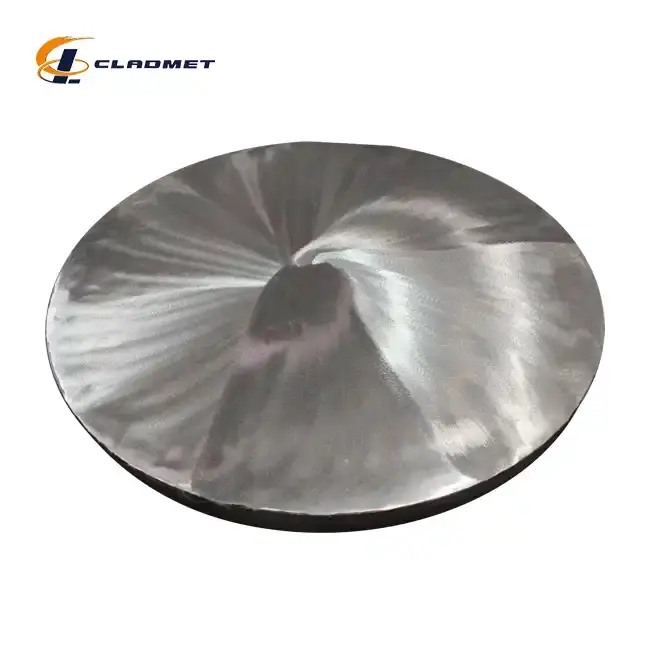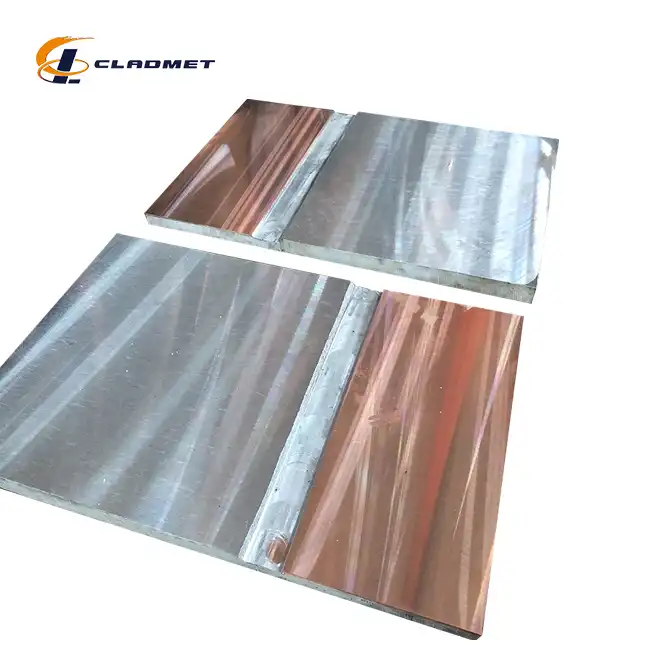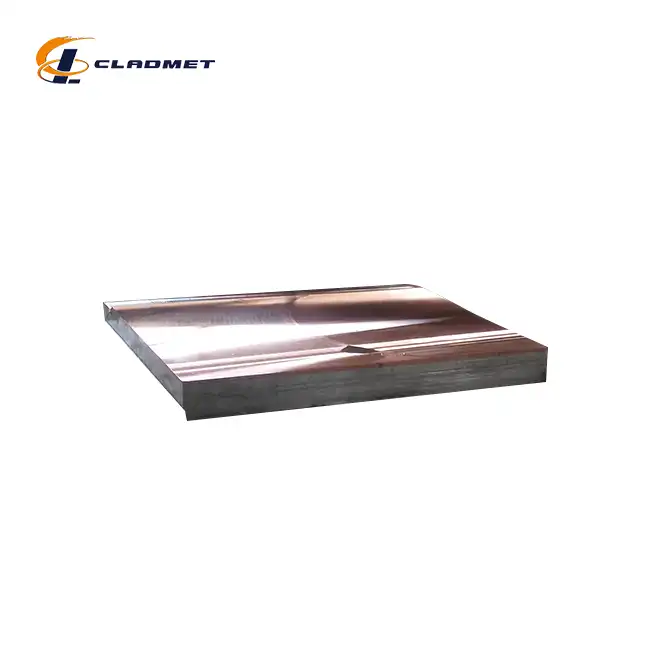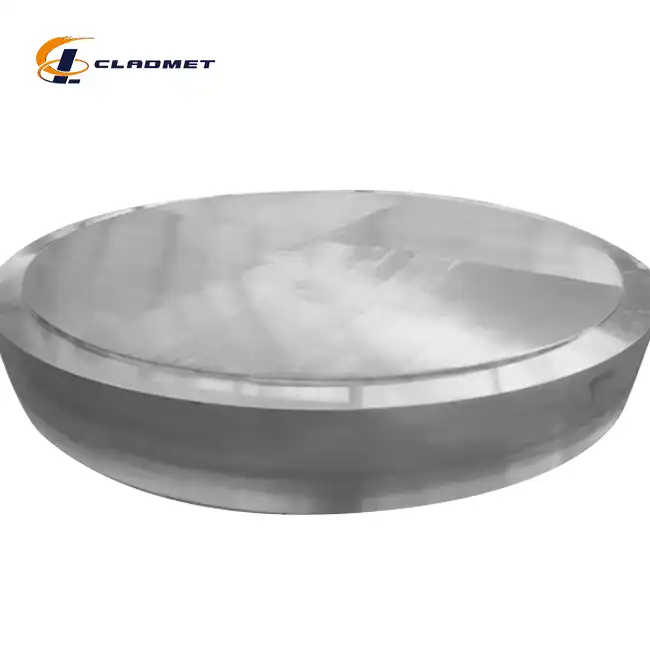How Can Stainless Clad Steel Plates Improve the Lifespan of Chemical Processing Equipment?
 2025-08-11 14:59:45
View:389
2025-08-11 14:59:45
View:389In the demanding world of chemical processing, equipment longevity directly impacts operational efficiency and profitability. Chemical processing environments expose equipment to harsh conditions including corrosive chemicals, extreme temperatures, and high-pressure operations that can rapidly degrade conventional materials. Stainless clad steel plates represent a revolutionary solution that significantly extends equipment lifespan by combining the superior corrosion resistance of stainless steel with the structural strength and cost-effectiveness of carbon steel substrates. These engineered materials provide exceptional protection against chemical attack while maintaining the mechanical properties necessary for demanding industrial applications, making them an optimal choice for petrochemical plants, pharmaceutical facilities, and chemical processing operations seeking to maximize equipment durability and minimize maintenance costs.

Enhanced Corrosion Resistance in Chemical Environments
Superior Protection Against Chemical Attack
Stainless clad steel plates provide unparalleled protection against corrosive chemical environments that would rapidly deteriorate conventional carbon steel equipment. The stainless steel cladding layer, typically composed of grades 304, 316, or 321, forms a protective barrier that resists attack from acids, alkalis, and other aggressive chemicals commonly found in processing facilities. This protection mechanism operates through the formation of a passive chromium oxide layer on the stainless steel surface, which continuously regenerates when damaged, ensuring long-term corrosion resistance. The advanced bonding techniques used in manufacturing, including explosion bonding and roll bonding, create a metallurgical bond that prevents delamination and ensures the protective layer remains intact throughout the equipment's operational life. Companies like Baoji JL Clad Metals Materials Co., Ltd. utilize these proven technologies to produce plates that meet stringent international standards including ASME, ASTM, and JIS specifications, ensuring consistent performance in chemical processing applications.
Resistance to Pitting and Crevice Corrosion
Chemical processing equipment frequently encounters localized corrosion phenomena such as pitting and crevice corrosion, which can cause catastrophic failure even when general corrosion rates appear manageable. Stainless clad steel plates excel in preventing these forms of localized attack through their carefully engineered surface composition and microstructure. The stainless steel cladding provides high resistance to chloride-induced pitting, a common failure mode in chemical processing environments containing halide ions. The molybdenum content in 316-grade stainless steel cladding enhances resistance to pitting and crevice corrosion, particularly in marine and chemical processing applications where chlorides are prevalent. Manufacturing processes that ensure complete bonding between the cladding and substrate eliminate potential crevice sites that could initiate localized corrosion. Quality control measures, including strict adherence to ISO9001-2000 standards and PED/ABS international qualifications, ensure that stainless clad steel plates maintain their protective properties throughout their service life, significantly extending equipment lifespan compared to conventional materials.
Chemical Compatibility and Versatility
The versatility of stainless clad steel plates in various chemical environments makes them invaluable for extending equipment lifespan across diverse processing applications. Different stainless steel grades can be selected for the cladding layer based on specific chemical compatibility requirements, allowing optimization for particular process conditions. Grade 304 stainless steel cladding provides excellent resistance to organic acids and many alkaline solutions, making it suitable for pharmaceutical and food processing applications. Grade 316 stainless steel, with its enhanced molybdenum content, offers superior resistance to chloride environments and reducing acids, making it ideal for petrochemical and marine applications. Grade 321 stainless steel, stabilized with titanium, provides exceptional resistance to intergranular corrosion in high-temperature environments, extending equipment life in thermal processing applications. The ability to customize cladding thickness from 3mm to 50mm and overall dimensions up to 12000mm in length allows engineers to design equipment that precisely matches the corrosion protection requirements of specific chemical processes, ensuring optimal performance and maximum equipment lifespan.
Structural Integrity and Mechanical Performance
Optimal Strength-to-Weight Ratio
Stainless clad steel plates achieve an optimal balance between structural integrity and weight considerations that significantly contributes to extended equipment lifespan. The carbon steel substrate, typically Q235 or Q345 grade, provides the necessary structural strength to withstand mechanical loads, pressure stresses, and thermal cycling while maintaining cost-effectiveness. This substrate material offers excellent weldability and formability, allowing for complex equipment geometries without compromising structural integrity. The stainless steel cladding adds minimal weight while providing maximum corrosion protection, resulting in equipment that maintains structural performance throughout its extended service life. The metallurgical bond created through explosion bonding or roll bonding ensures that the composite material behaves as a single entity under mechanical stress, preventing delamination and maintaining structural integrity even under extreme operating conditions. Advanced manufacturing techniques employed by specialized companies ensure that stainless clad steel plates meet stringent mechanical property requirements while optimizing material utilization and cost-effectiveness.
Pressure Vessel and High-Temperature Applications
Chemical processing equipment often operates under extreme pressure and temperature conditions that challenge conventional materials and limit equipment lifespan. Stainless clad steel plates excel in these demanding applications by combining the high-temperature strength of the carbon steel substrate with the thermal stability and oxidation resistance of the stainless steel cladding. The composite structure maintains mechanical properties at elevated temperatures, preventing thermal degradation that commonly limits the lifespan of conventional materials. Pressure vessel applications benefit from the uniform stress distribution achieved through proper bonding techniques, ensuring that the equipment can withstand cyclic loading without fatigue failure. The thermal expansion compatibility between the cladding and substrate materials prevents stress concentration that could lead to premature failure. Manufacturing processes that include hot isostatic pressing (HIP) can be employed for critical applications requiring exceptional material integrity and strength, ensuring that stainless clad steel plates perform reliably throughout their extended service life in high-pressure, high-temperature chemical processing environments.
Fatigue Resistance and Cyclic Loading Performance
Chemical processing equipment frequently experiences cyclic loading conditions from pressure fluctuations, thermal cycling, and mechanical vibrations that can significantly impact equipment lifespan. Stainless clad steel plates demonstrate superior fatigue resistance due to their composite structure and the stress-relieving properties of the metallurgical bond interface. The stainless steel cladding provides a smooth, corrosion-resistant surface that eliminates stress concentration points that could initiate fatigue cracks. The underlying carbon steel substrate maintains structural continuity and load-bearing capacity, distributing stresses effectively throughout the component. Advanced bonding techniques ensure that the interface between cladding and substrate does not become a preferential site for fatigue crack initiation or propagation. Quality control measures, including non-destructive testing and adherence to international standards, verify the integrity of the bond interface and ensure consistent fatigue performance. The combination of corrosion resistance and mechanical durability provided by stainless clad steel plates results in equipment that maintains structural integrity throughout numerous loading cycles, significantly extending service life compared to conventional materials in chemical processing applications.

Cost-Effectiveness and Economic Benefits
Reduced Maintenance and Replacement Costs
The implementation of stainless clad steel plates in chemical processing equipment delivers substantial economic benefits through dramatically reduced maintenance requirements and extended replacement intervals. Traditional carbon steel equipment in chemical processing environments requires frequent maintenance, including surface treatments, protective coatings, and component replacements due to corrosion damage. The superior corrosion resistance of stainless steel cladding eliminates the need for regular surface maintenance while the robust carbon steel substrate maintains structural integrity throughout extended service periods. Planned maintenance schedules can be extended significantly, reducing downtime costs and maintenance labor requirements. The elimination of frequent component replacements results in substantial cost savings over the equipment's lifetime, with many installations demonstrating service lives exceeding 20 years with minimal maintenance intervention. Manufacturing quality standards, including ISO9001-2000 certification and PED/ABS international qualifications, ensure consistent performance and reliability, reducing the risk of unexpected failures that could result in costly production interruptions. The long-term economic advantages of stainless clad steel plates often justify their initial investment through reduced total cost of ownership.
Lifecycle Cost Analysis and Return on Investment
A comprehensive lifecycle cost analysis reveals that stainless clad steel plates provide superior return on investment compared to conventional materials in chemical processing applications. Initial material costs are offset by extended service life, reduced maintenance requirements, and improved operational reliability. The composite structure eliminates the need for expensive high-alloy materials throughout the entire component while providing equivalent or superior performance characteristics. Energy costs associated with equipment operation remain stable throughout the service life due to maintained surface conditions and thermal properties. Insurance and liability costs may be reduced due to the enhanced safety and reliability provided by corrosion-resistant materials. The ability to customize material specifications, including thickness ranges from 3mm to 50mm and various surface treatments, allows optimization of material usage and cost-effectiveness for specific applications. Manufacturing flexibility, including standard and custom sizes available upon request, enables engineers to design equipment that maximizes performance while minimizing material costs. The extended service life of stainless clad steel plates results in reduced replacement frequency, minimizing the economic impact of equipment upgrades and modifications over the facility's operational lifetime.
Manufacturing Efficiency and Production Advantages
The manufacturing advantages of stainless clad steel plates contribute significantly to their cost-effectiveness and overall economic benefits in chemical processing applications. Advanced bonding technologies, including explosion bonding and roll bonding, enable efficient production of large plates with consistent quality and performance characteristics. The ability to process materials in thicknesses ranging from 3mm to 50mm and dimensions up to 12000mm in length allows for the manufacture of major equipment components without the need for field welding or assembly. This manufacturing capability reduces fabrication costs and improves overall component quality by eliminating potential weak points associated with welded joints. Surface treatment options, including polished, brushed, and matte finishes, can be applied during manufacturing to meet specific process requirements without additional post-processing costs. Quality control measures integrated throughout the manufacturing process ensure that stainless clad steel plates meet stringent specifications consistently, reducing the risk of material defects that could impact equipment performance. The combination of manufacturing efficiency and product reliability results in cost-effective solutions that provide superior value in chemical processing applications while supporting extended equipment lifespan.
Conclusion
Stainless clad steel plates represent a transformative solution for extending chemical processing equipment lifespan through their unique combination of corrosion resistance, structural integrity, and economic benefits. The composite material design effectively addresses the primary failure modes encountered in chemical processing environments while maintaining cost-effectiveness and manufacturing flexibility. Superior corrosion resistance prevents chemical attack and localized corrosion phenomena that typically limit equipment life. Enhanced mechanical performance ensures structural integrity under extreme operating conditions. The economic advantages realized through reduced maintenance requirements and extended service life provide compelling justification for implementation across diverse chemical processing applications.
At Baoji JL Clad Metals Materials Co., Ltd., we leverage our independent explosive composite technology and advanced manufacturing capabilities to deliver innovative solutions that meet the unique challenges of chemical processing environments. Our commitment to technological superiority, combined with comprehensive OEM/ODM customization services, ensures that our stainless clad steel plates provide optimal performance for your specific applications. With ISO9001-2000 quality certification and PED/ABS international qualifications, we guarantee consistent quality and reliability. Our extensive research and development capabilities enable us to provide innovative design solutions tailored to meet your unique requirements. Partner with us to experience the advantages of extended equipment lifespan and enhanced operational efficiency. Contact us today at sales@cladmet.com to discuss how our customized solutions can optimize your chemical processing operations and deliver exceptional value for your investment.
References
1. Davis, J.R. (2001). "Corrosion of Stainless Steels in Chemical Processing Industries." ASM International Handbook of Corrosion Resistance, 2nd Edition. Materials Park, OH: ASM International.
2. Peckner, D. and Bernstein, I.M. (1977). "Handbook of Stainless Steels: Applications in Chemical Processing Equipment." McGraw-Hill Professional Engineering Series. New York: McGraw-Hill Book Company.
3. Sedriks, A.J. (1996). "Corrosion of Stainless Steels in Process Equipment: Performance and Longevity Analysis." Corrosion Science and Technology, Volume 18. New York: John Wiley & Sons.
4. Fontana, M.G. and Greene, N.D. (1987). "Corrosion Engineering: Equipment Design and Material Selection for Chemical Processing." Materials Science and Engineering Series, 3rd Edition. New York: McGraw-Hill Publishing.

_1737007724117.webp)
_1736996330512.webp)









